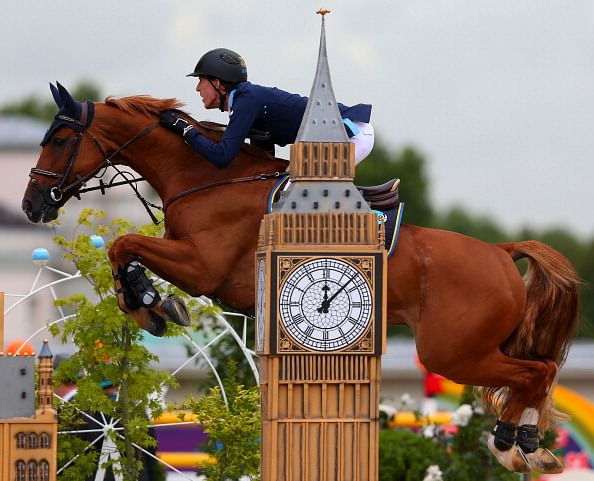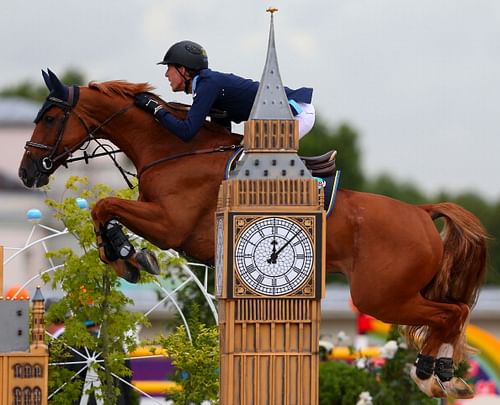
The worst serial murderer sports has ever seen

File photo of a show jumper
“I don’t want to break his leg,” Tommy Burns, at the bar near Gainesville, sang to his associate and partner-in-crime Harlow Arlie in his executioner’s song. “I’m not into that.”
“I’ll do it,” Burns says Arlie told him. “For half your fee.”
The above excerpt from Blood Money by William Nack and Lester Munson gives us a glance into the insensate and gruesome murders of show horses and hunters for over a decade.
Tommy Burns, also known as the Sandman for his notoriety as a professional horse killer, was found guilty of murdering over twenty horses during the 80s after being caught in the act by United States Federal authorities. Burns was often hired by wealthy owners to quietly get rid of their horse so as to claim the hefty insurance cover on the animal’s life.
It had almost become a way of life for various wealthy socialites, horse trainers and equestrians. They would often invest in a horse, inflate his price by selling fraudulent shares and finally insure him for the inflated value. The horses were then coldly executed in the middle of the night and the owners would often benefit in thousands of dollars from the insurance companies.
According to investigators, Burns was merely the ‘tip of the iceberg’ and just a professional killer for hire. While Burns was offered sums of over $5,000 for every horse that he killed, the owners would more often pocket hundreds of thousands of dollars from the insurance companies.
The man who introduced Burns to this grisly business of horse killings was James Druck, an attorney who defended insurance companies against illegitimate claims. Sheer irony!
Druck’s daughter Lisa, now popularly known as Rielle Hunter, was a ‘prize-winning equestrian’ according to ABC news and owned a show horse named Henry The Hawk.
However, Lisa was only seventeen and on grounds of being an underage, her father controlled her finances. Druck did a ‘Brutus’ when he conspired to kill Henry The Hawk so as to extract a sum of $150,000 from the insurance companies.
Having practiced as a legal advisor for insurance companies for the greater part of his career, Druck was clearly aware that even the best veterinary pathologists won’t be able to determine the cause of death in the post-mortem if the horse was electrocuted. The autopsy report would eventually conclude the reason of death as colic, a fatal condition in horses unless there is an instantaneous surgical intervention. That is when Druck hired Burns to kill Henry and kickstarted his ten year long killing career.
“You better get out of the way, they go down immediately. One horse dropped so fast in the stall, he must have broken his neck when he hit the floor. It’s a sick thing, I know, but it was quick and it was painless. They didn’t suffer.” – Burns on his preferred mode of murder by electrocution.
However, the gory killings and misdealing of horses date back to the middle of 70s long before Burns embarked on a murdering spree.
Helen Brach, the heiress to the multi-millionaire E.J. Brach and Sons Candy Company, was found missing in February, 1977 and was later declared legally dead seven years later in 1984. Richard Bailey and his associates were found guilty of defrauding Brach as well as soliciting her murder and the former was eventually sentenced to life imprisonment.
Bailey used to befriend wealthy widows and persuade them into investing in overvalued horses. At times, there would be a stooge in the auction to convince the buyer of the value that she was about to pay for the horse. Bailey would often kill the horses after they were sold before the buyer had a chance to find out if she had overpaid if at all. It is believed Brach had suspicions over Bailey’s motives and wanted to report the mistreatment towards horses to the cops. She never made it, though.
Bailey’s fraudulence in the horse business paved the way for horse trainers and equestrians to get involved in the infamous Horse Murders Scandal which lasted from the mid 70s to the mid 90s. It is believed close to 100 horses were killed during this period leading people to call this the ‘one of the most gruesome stories in sports history’.